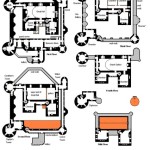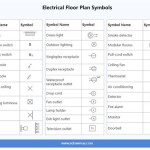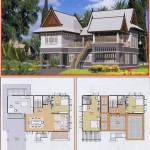Tiny House Plans on Wheels Without a Loft: Essential Considerations
Tiny houses on wheels offer a unique and versatile solution for those seeking a more portable and sustainable lifestyle. While many tiny house designs incorporate a sleeping loft to maximize space, some individuals may prefer a loft-free layout. This article will delve into the essential aspects to consider when designing and building a tiny house on wheels without a loft.
### Space PlanningWithout a loft, you must optimize the available floor space to accommodate the essential living areas. A well-thought-out floor plan is crucial to ensure efficient and comfortable use of the space. Consider the following zones:
*Sleeping Area:
Determine the size and location of the sleeping area, considering the number of occupants and privacy needs. *Kitchen:
Plan a functional kitchen with adequate storage, workspace, and appliances to meet your culinary requirements. *Bathroom:
Include a compact bathroom with essential fixtures such as a toilet, sink, and shower. *Living Area:
Create a cozy and inviting living space for relaxation and entertainment. ### Storage SolutionsStorage is a critical aspect in any tiny house, especially without a loft. Utilize every available space for storage, including under-bed drawers, wall-mounted shelves, and hidden compartments. Consider vertical storage solutions, such as stackable bins and hanging organizers, to maximize space utilization.
### Natural Light and VentilationNatural light and ventilation are essential for creating a healthy and comfortable living environment. Incorporate large windows or skylights to allow ample sunlight to enter the space. Cross-ventilation is also crucial to maintain air quality and reduce humidity.
### Materials and InsulationThe choice of materials and insulation is vital for ensuring durability and energy efficiency. Consider using lightweight and durable materials, such as aluminum siding and composite decking, to minimize weight while maintaining strength. Proper insulation is essential to regulate temperature and reduce energy consumption.
### Heating and CoolingHeating and cooling systems are essential for maintaining a comfortable indoor climate throughout the year. Explore various options, such as a wood-burning stove, propane or electric heater, and air conditioning units, based on the climate and your energy preferences.
### Electrical and Plumbing SystemsEnsure proper electrical and plumbing systems to support your appliances, fixtures, and utilities. Consider a solar panel system for off-grid living or a generator for emergencies. Contact licensed professionals for electrical and plumbing installations to ensure safety and functionality.
### Ventilation and Air QualityMaintain good ventilation to prevent moisture buildup and ensure air quality. Install a roof vent or ceiling fan to circulate air throughout the space. Use low-VOC (volatile organic compound) materials and finishes to reduce indoor air pollution.
### ConclusionDesigning and building a tiny house on wheels without a loft requires careful planning and attention to essential aspects. By considering space utilization, storage solutions, natural light, insulation, heating and cooling, electrical and plumbing systems, and ventilation, you can create a functional, comfortable, and efficient living space that meets your specific needs.

No Loft Tiny Houses House Floor Plan With Ideas Plans Small Cabin

117 Sq Ft No Loft Tiny Home Tumbleweed Elm 20 Horizon House Pins

Top 10 Tiny Houses On Wheels With Downstairs Bedrooms

Tortoise S Floor Plan For An 8x32 No Lofts And Steps Ladders But Very L O N G Diy Tiny House Plans Layout

11 No Loft Tiny Home On Wheels Ideas House Design

Why You Need A One Story Tiny House Without Loft The Life

No Loft A Tiny Nantucket Style Beach House On Wheels

Top 10 Tiny Houses On Wheels With Downstairs Bedrooms

Tiny House Plans For Families The Life
Beautiful Tiny Homes








